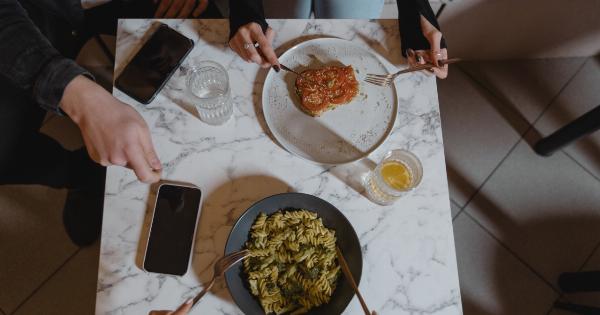There are numerous reasons why people choose to adopt a meat-free diet, including ethical, environmental, and health considerations.
However, when eliminating meat from the diet, it’s essential to ensure you’re still getting enough iron, as it plays a vital role in the body. Iron is responsible for transporting oxygen throughout the body and maintaining overall wellbeing. While meat is a primary source of iron, there are plenty of plant-based alternatives that can provide you with this essential nutrient.
In this article, we will explore some iron-rich vegetarian and vegan food sources and offer tips on how to optimize iron absorption to maintain a healthy and balanced diet.
Understanding Iron
Iron is an essential mineral found in every cell of the human body. It is required for the production of red blood cells, which carry oxygen from the lungs to the rest of the body.
Iron also plays a key role in energy production, immune function, and cognitive development.
There are two types of dietary iron: heme iron and non-heme iron. Heme iron is found in animal products and is more easily absorbed by the body. Non-heme iron, on the other hand, is primarily found in plant-based foods and is not as efficiently absorbed.
However, with proper dietary planning and optimization of iron absorption, it is possible to maintain adequate iron levels on a meat-free diet.
Iron-Rich Plant-Based Foods
While it may require a bit more effort to obtain sufficient iron from a meat-free diet, there are various plant-based foods that can provide this vital nutrient. Here are some excellent sources:.
1. Legumes
Beans, lentils, chickpeas, and other legumes are rich in iron, making them an ideal addition to a vegetarian or vegan diet. They also offer other essential nutrients like protein, fiber, and various vitamins and minerals.
Incorporating legumes into your meals, such as in soups, stews, curries, and salads, can boost your iron intake significantly.
2. Dark Leafy Greens
Vegetables like spinach, kale, Swiss chard, and broccoli are not only packed with antioxidants but are also excellent sources of iron.
These dark leafy greens are versatile and can be added to salads, smoothies, stir-fries, or used as a bed for other flavorful dishes.
3. Whole Grains
Whole grains, such as quinoa, amaranth, brown rice, and oats, contain iron and are also high in fiber. Including these grains in your meals provides a nutritious way to up your iron intake.
They can be used as a base for grain bowls, added to soups, or enjoyed as a side dish.
4. Nuts and Seeds
Almonds, cashews, pumpkin seeds, hemp seeds, and chia seeds are all great sources of iron and healthy fats.
Snacking on a handful of nuts or seeds or incorporating them into your meals, desserts, or smoothies can contribute to meeting your iron requirements.
5. Tofu and Soy Products
Tofu, tempeh, edamame, and other soy-based products are not only rich in protein but also provide a good amount of iron.
These versatile ingredients can be used in various dishes, from stir-fries to soups and sandwiches, allowing for a wide range of iron-rich meal options.
6. Dried Fruits
Raisins, apricots, prunes, and other dried fruits offer a concentrated source of iron. They can be enjoyed as a snack on their own or incorporated into trail mixes, oatmeal, or baked goods to increase your iron intake.
Optimizing Iron Absorption
While consuming iron-rich plant-based foods is essential, maximizing your body’s ability to absorb iron is equally crucial. Here are some strategies to enhance iron absorption:.
1. Pair Iron-Rich Foods with Vitamin C
Vitamin C aids in the absorption of non-heme iron. Including fruits like oranges, berries, kiwi, and vegetables like bell peppers and tomatoes alongside iron-rich meals can significantly boost iron absorption.
Consider adding a squeeze of lemon juice to your iron-rich dishes for an extra vitamin C kick.
2. Avoid Consuming Iron Blockers
Some substances can inhibit iron absorption when consumed alongside iron-rich foods. These include tea, coffee, and certain high-calcium foods like dairy products.
To optimize iron absorption, it’s best to avoid consuming these iron blockers with meals. Instead, enjoy them between meals to minimize their impact on iron uptake.
3. Cook with Cast-Iron Cookware
Cooking acidic foods like tomato sauce or curries in cast-iron cookware can increase the iron content of the dish. The small amount of iron leaches into the food during cooking, offering an additional iron boost.
4. Soak and Sprout Legumes and Grains
Soaking and sprouting legumes and grains before cooking can help reduce the presence of phytates, which are compounds that can inhibit iron absorption. This simple preparation technique enhances the bioavailability of iron in these foods.
Supplementing When Necessary
In certain situations, such as an iron deficiency or when following a strictly vegan diet, it may be necessary to supplement iron.
Consulting with a healthcare professional or registered dietitian can help determine if supplementation is needed and to what extent.
Iron supplements should only be taken under medical supervision, as excessive iron intake can lead to toxicity.
It’s important to have your iron levels tested and to follow healthcare professionals’ recommendations regarding the appropriate type and dosage of iron supplements, if required.
In Summary
Transitioning to a meat-free diet doesn’t mean sacrificing your iron intake.
By incorporating a variety of iron-rich plant-based foods into your meals, optimizing iron absorption, and considering supplementation when necessary, it is entirely possible to meet your daily iron needs. Remember to consult a healthcare professional or registered dietitian to ensure you’re maintaining a well-balanced and adequate iron intake tailored to your specific needs.































